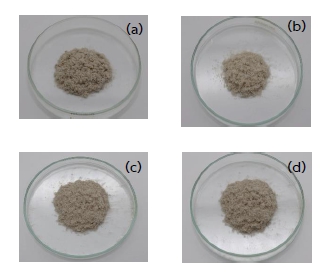Study on chemical composition of Typha angustifalia L and extracted cellulose from Typha angustifalia L for food applications
Keywords:
Typha angustifolia L., Saline soil, Cellulose, Dietary FiberAbstract
The aims of this study were to study the chemical composition, moisture, ash, substance insoluble in organic solvents, lignin, crude fiber, holo-cellulose, and alpha-cellulose of Typha angustifolia L in saline soil at Nong Bo, Borabue, Maha Sarakham District from 4 part, leaves and trunk on young seedlings and adults, and to extract the cellulose from Typha angustifolia L in saline soil from 4 part, leaves and trunk on young seedlings and adults. The amount of moisture, ash, substance insoluble in organic solvents and lignin were 78.60-88.99 7.43-9.40 11.98-15.73 and 8.92-16.75%, respectively, which was in a level that can be processed and eaten without harm to the body. The crude fiber, holo-cellulose, and alpha-cellulose of Typha angustifolia L in saline soil were 29.13-36.61 52.53-66.16 and 37.83-54.44%, respectively, that suitable as an alternative plant to utilize the fiber. The extracted cellulose from leaf sapling, trunk sapling, leaf adults and trunk adults showed the low impurity and a high alpha-cellulose. The cellulose from the trunk adults revealed the highest alpha-cellulose content of 86.52%, equivalent to cellulose in the market. When analyzing crystal structure by X-ray diffraction and FT-IR, it was found that lignin was eliminated, and the high purity and crystalline cellulose were constraining. The Typha angustifolia L in saline soil at Nong Bo, Borabue, Maha Sarakham District can be a source of cellulose for food applications.


